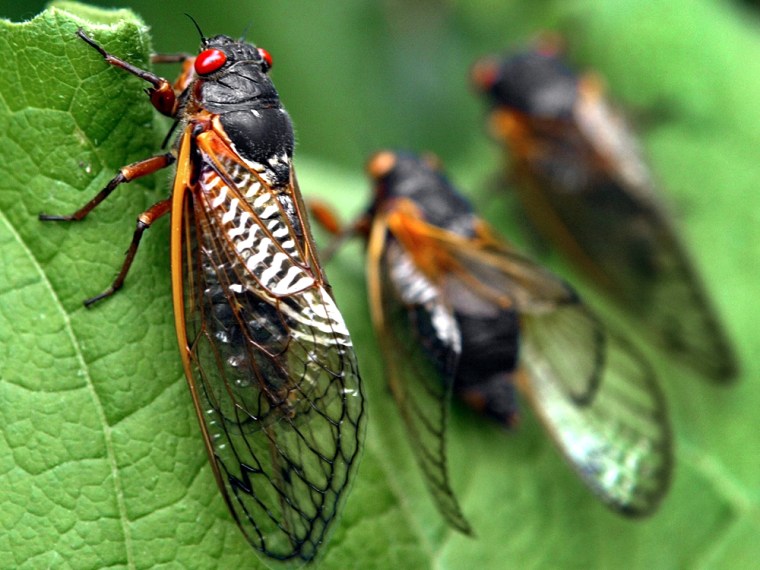Their droning love songs have faded, the skies are free of their tumbling flights and the carcasses that littered sidewalks have washed away.
The Brood X cicadas, vintage 2004, are gone.
But in the trees of several mid-Atlantic and Midwest states, the next generation is just beginning its 17-year life. Within the next few weeks, billions of eggs deposited in tree branches will hatch and rain down tiny white nymphs no bigger than sesame seeds with beady red eyes.
They will burrow through the dirt to tree roots and won't emerge as adults until 2021.
"We're sitting on the nest right now," said Mike Raupp, a University of Maryland entomologist who has closely monitored this year's cicadas.
Most people won't notice the nymphs' dash to safety since they are so small, said Gene Kritsky, a biology professor at the College of Mount St. Joseph in Cincinnati. But if seen in the right light, they look like small sparkles raining out of trees.
Over the past two months, billions of the Brood X cicadas inundated sections of the mid-Atlantic from New Jersey to Virginia, portions of the south such as Tennessee, and parts of Ohio and Indiana. Hordes tunneled up from their resting spots below trees, shed their skins and took flight. Males belted out mating calls at decibel levels that created an ever-present din.
But by mid-June, they began to die out. As their last act, females ready to lay eggs sought the tips of woody tree branches where each gouged dozens of small slits in the wood and deposited about 600 eggs apiece.
While not a threat to large healthy trees, egg laying can hobble small saplings whose limbs are mostly small branches.
Gardeners flooded the Behnke Nurseries in Beltsville in May and June in search of netting to keep females off young trees. The store sold about three times more netting than usual, according to manager Alex Dencker.
"People were worried that everything was going to die," Dencker said. "I told them it is like a bad hair cut _ you're going to lose growth, it's going to look ugly for the first year, but it's not going to kill the tree."
For the nymphs that emerge from their tree-tip nests, the world is a dangerous place. As they plunge to the ground, the nymphs are prime targets for predators such as bugs and mites. If the ground is too hard, they can't burrow to the tree roots. In the first two years, mortality for nymphs is around 90 percent, Raupp said.
For cicada buffs and scientists like Kritsky, who is drawing maps of the range of Brood X cicadas in Ohio and Indiana, the scientific work is still not done.
"For real cicada people, it's not over yet," he said.
Raupp said he learned several things from this year's crop of cicadas. They can fly up to 1,000 feet, he said, meaning they can move fairly far to colonize areas that previously didn't have cicadas, such as new housing developments built in what were once fields.
He has also had reports of females laying eggs in some strange places _ asparagus plants, goldenrod stalks and other herbaceous plants.
"We've had some surprises with these guys," he said.
Raupp said the departure of this year's batch of cicadas has caused a bit of "cicada malaise" around his lab, especially since researchers will have to wait another 17 years for Brood X to return.
Linda Pieplow feels a bit the same way. She used to leave the windows of her Columbia home open to hear their songs and would even move flapping cicadas off the street to save them from cars or from being trampled.
"As I saw less and less of them, I became more conscious of moving them into the grass," she said. "They are an amazing representation of nature. I'm sort of missing them."
